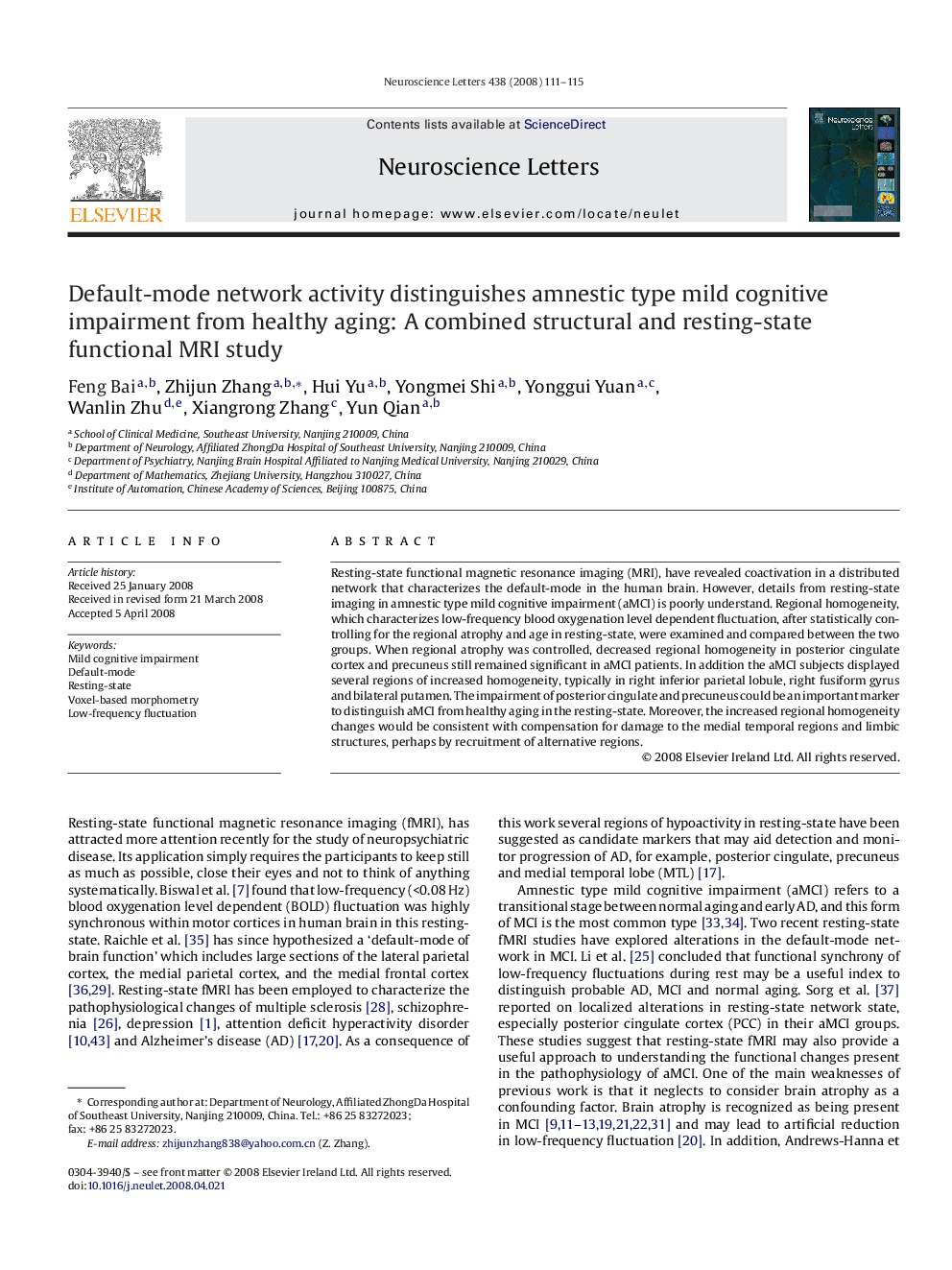| Article ID | Journal | Published Year | Pages | File Type |
|---|---|---|---|---|
| 4348428 | Neuroscience Letters | 2008 | 5 Pages |
Resting-state functional magnetic resonance imaging (MRI), have revealed coactivation in a distributed network that characterizes the default-mode in the human brain. However, details from resting-state imaging in amnestic type mild cognitive impairment (aMCI) is poorly understand. Regional homogeneity, which characterizes low-frequency blood oxygenation level dependent fluctuation, after statistically controlling for the regional atrophy and age in resting-state, were examined and compared between the two groups. When regional atrophy was controlled, decreased regional homogeneity in posterior cingulate cortex and precuneus still remained significant in aMCI patients. In addition the aMCI subjects displayed several regions of increased homogeneity, typically in right inferior parietal lobule, right fusiform gyrus and bilateral putamen. The impairment of posterior cingulate and precuneus could be an important marker to distinguish aMCI from healthy aging in the resting-state. Moreover, the increased regional homogeneity changes would be consistent with compensation for damage to the medial temporal regions and limbic structures, perhaps by recruitment of alternative regions.
